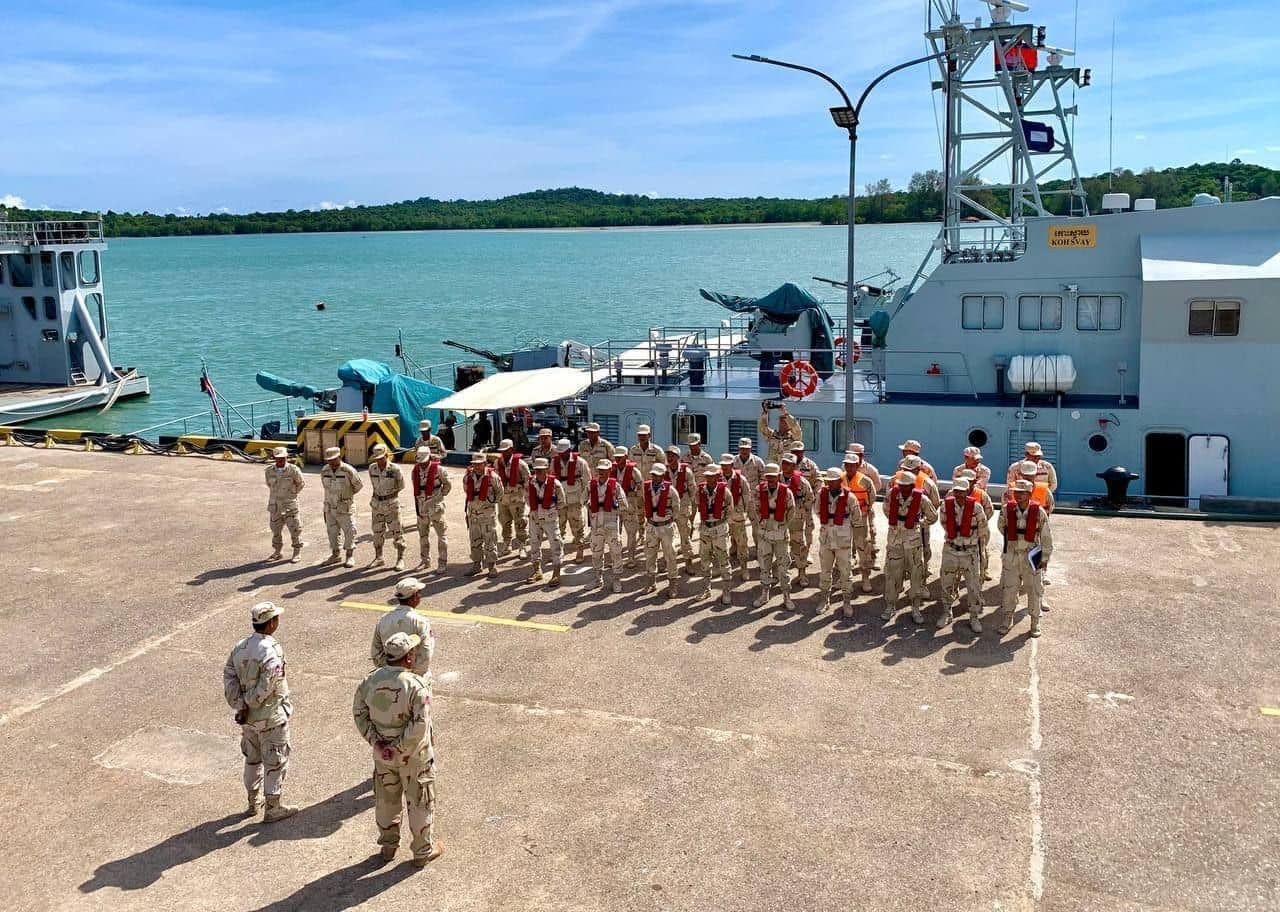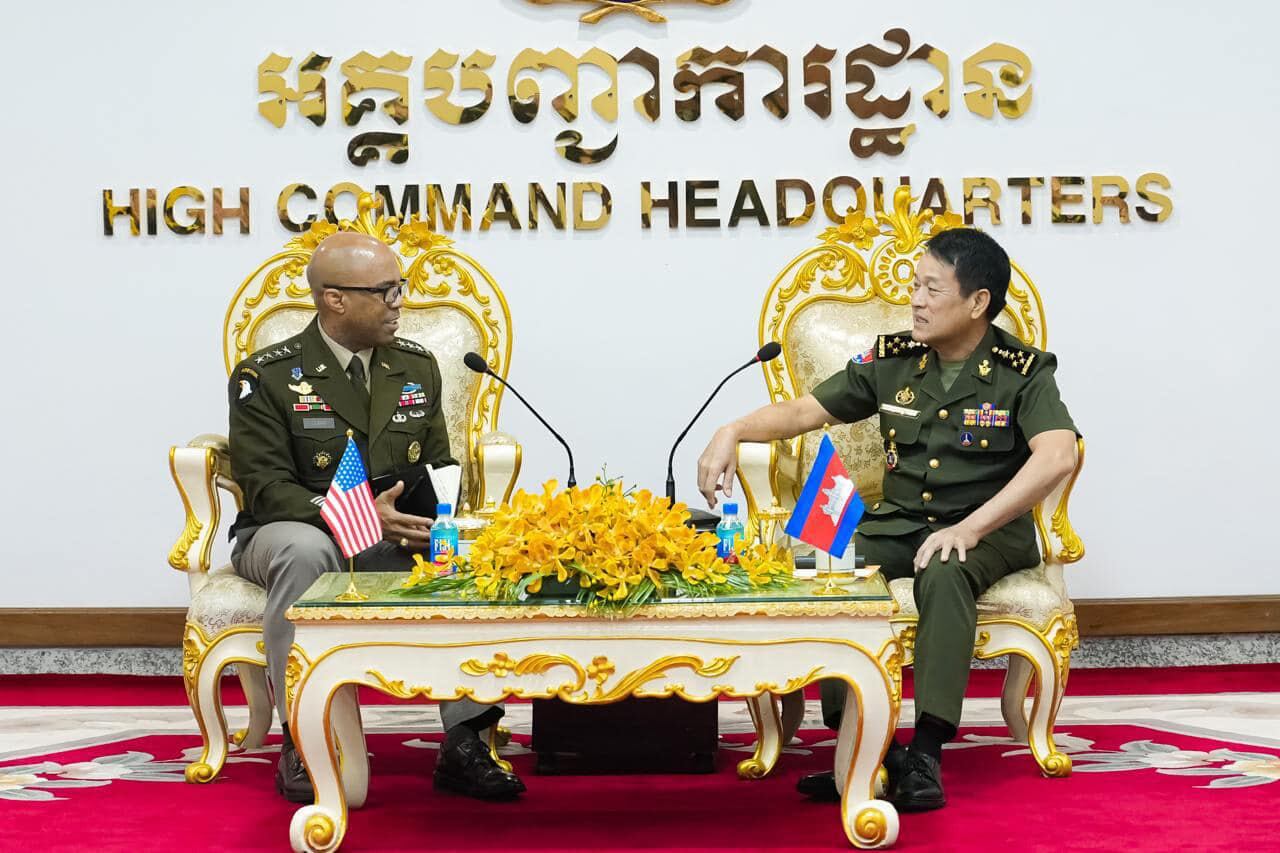TAIPEI, Taiwan – Japan said two of its minesweepers will visit a naval port in Cambodia this weekend in the first foreign navy visit since a Chinese-funded upgrade was completed.
The Ream Naval Base was officially inaugurated earlier this month, featuring a new pier capable of handling much larger vessels, a dry dock for repairs, and other upgraded facilities. China’s involvement in the project has raised concerns among rival powers, who fear Beijing could use the base as a strategic foothold.
While noting concern about China’s growing move to secure overseas military outposts, Japanese Defense Minister Gen Nakatani said the port call by the Japanese ships – the Bungo and the Etajima – will help Cambodia to have a naval port that is open and transparent.
“It will contribute to the further openness of the port and it is important in achieving stability and peace in the region,” said Nakatani on Tuesday, adding that the visit “symbolizes friendship and closer security cooperation” between Japan and Cambodia.
The two ships left Japan in January and are currently on a four-month mission that includes multinational exercises in the Indo-Pacific and Middle East. The vessels are set to stay at the Cambodian port from April 19-22.
In recent years, Japan has strengthened its ties with Cambodia in an effort to counterbalance China’s growing influence in the region. Cambodia invited Japan to make the first port call at the upgraded site.
The Cambodian government said it was giving priority to Japanese warships as a tribute to the “high level of openness in cooperation, relations and mutual trust between the two sides.”
China and Cambodia began working on the redevelopment of the Ream Naval Base in June 2021, with the project largely funded by Beijing.
However, actual construction did not commence immediately. It wasn’t until June 2022 that a formal groundbreaking ceremony was held, marking the public start of the project.
The ceremony was attended by high-ranking Cambodian and Chinese military officials, highlighting the strategic importance of the development to both countries.
The redevelopment plan included extensive upgrades to existing facilities and the addition of new infrastructure, such as a pier capable of docking larger warships, a dry dock for ship repairs, and expanded logistical and operational support structures.
Satellite imagery in the following months showed rapid construction progress, fuelling speculation – particularly among Western governments – that the base could host Chinese naval forces in the future.
Last year, two Chinese warships were docked at the port for several months while the upgrade was underway.
While both Phnom Penh and Beijing denied that China would be granted exclusive military access to the base, U.S. officials expressed repeated concerns. They said the development lacked transparency and could signal the establishment of a permanent Chinese military presence in the Gulf of Thailand, a strategic maritime gateway to the South China Sea.
Edited by Stephen Wright.



